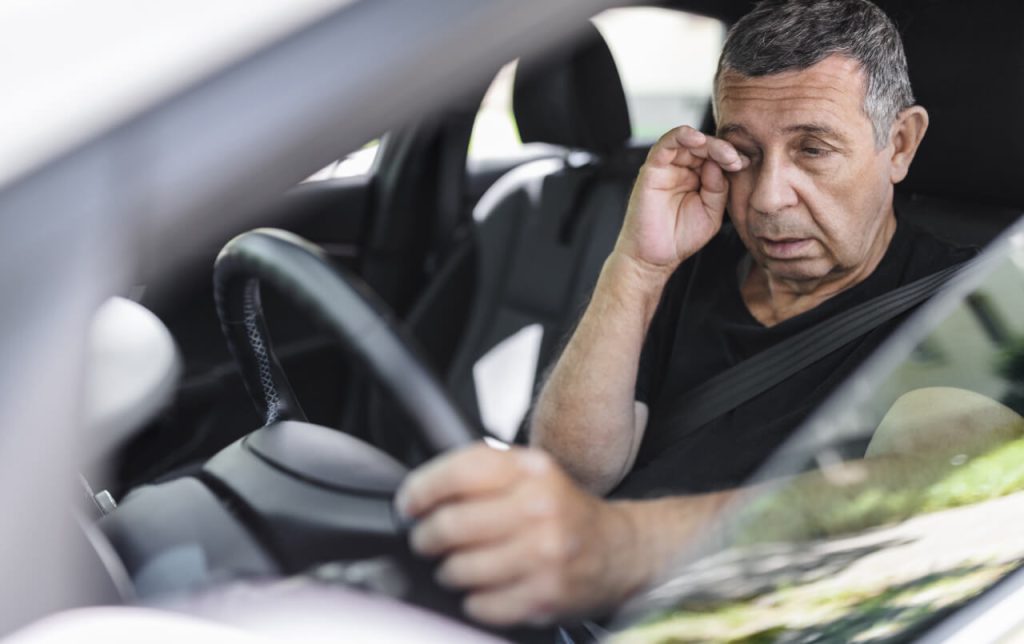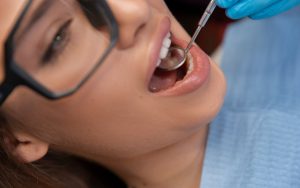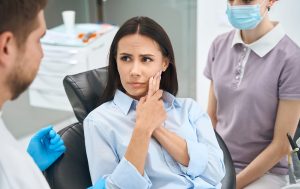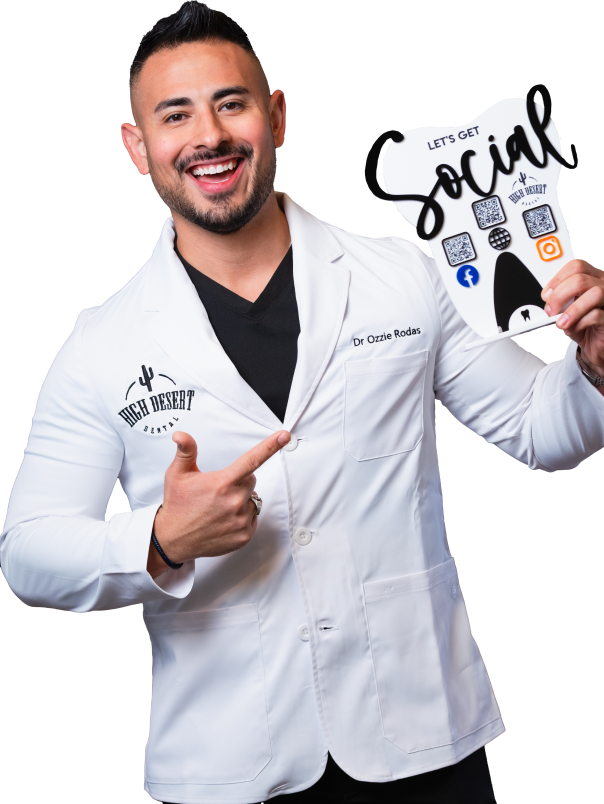Tooth extractions are a routine dental procedure, but they often raise important questions about recovery, including one of the most practical concerns: “Can I drive after tooth extraction?” While this may seem like a straightforward question, the answer depends on several factors, including the type of anesthesia used, the complexity of the procedure, and the patient’s individual response.
Driving after a tooth extraction is not just about feeling alert; it’s also about ensuring that your reflexes, coordination, and decision-making abilities are not compromised. This blog will dive into the unique considerations surrounding driving post-extraction, offering insights rarely discussed in dental care, so you can make safe, informed choices about your recovery.
Understanding Tooth Extraction and Its Impact
Why Tooth Extractions Are Performed
Tooth extractions are not just a last resort for severely decayed or damaged teeth—they play a critical role in maintaining overall oral health. Dentists may recommend extractions for a variety of reasons. In cases where a tooth is beyond repair through fillings or crowns due to severe decay or damage, extraction becomes necessary to prevent further oral complications. Impacted wisdom teeth are another common reason for removal, as they can cause pain, infection, or crowding of adjacent teeth if left untreated.
Extractions are also performed to address overcrowding, especially prior to orthodontic treatments like braces, to create adequate space for alignment. Advanced gum disease may lead to the removal of teeth when periodontal damage compromises the tooth’s support structure. Additionally, for patients with weakened immune systems, removing an infected tooth can prevent further health complications. Each extraction is tailored to preserve the overall health and functionality of the patient’s oral structure.
Types of Anesthesia Used During Tooth Extractions
The type of anesthesia used during an extraction significantly influences post-procedure recovery and the ability to drive. Dentists tailor anesthesia to the complexity of the extraction and patient needs:
- Local anesthesia: Numbs the extraction site and is commonly used for simple removals.
- Sedation anesthesia: Administered intravenously to keep patients calm and semi-conscious, often used for complex extractions.
- General anesthesia: Renders the patient fully unconscious and is reserved for surgical extractions or extreme anxiety cases.
Each type of anesthesia has unique recovery implications, from prolonged drowsiness with sedation to quicker rebound times with local anesthesia, impacting whether driving is safe or advisable.
Driving After Tooth Extraction: What to Consider
Can I Drive After Tooth Extraction?
The ability to drive after a tooth extraction depends on several factors, including the type of anesthesia used, the complexity of the procedure, and how the body responds to treatment. For patients receiving only local anesthesia, driving is typically safe as it doesn’t impair cognitive or motor skills. However, for those undergoing sedation or general anesthesia, driving is strictly discouraged for at least 24 hours. These anesthetics can cause dizziness, delayed reflexes, and impaired judgment, even after the immediate effects seem to wear off. Always consult your dentist about your specific situation before getting behind the wheel.
Tooth Extraction Anesthesia and Driving
Anesthesia affects people differently. While local anesthesia wears off quickly, sedation and general anesthesia often have lingering effects that aren’t immediately obvious. One of the key issues is slowed reaction times, which can impair your ability to respond appropriately to traffic conditions. Additionally, confusion or drowsiness may reduce focus and decision-making abilities, creating further risks while driving. Residual effects from medications, such as painkillers or sedatives administered during or after the procedure, can also prolong cognitive impairment. These factors collectively make it crucial to avoid driving until the effects of anesthesia and medications have fully worn off.
Post-Extraction Care Driving Guidelines
For your safety and that of others, follow these guidelines:
- Arrange for a friend or family member to drive you home if sedation or general anesthesia is used.
- Avoid driving if you feel lightheaded or drowsy.
- Monitor your reaction to medications prescribed for pain management before considering driving.
Your recovery should take precedence over convenience to ensure a safe experience for everyone on the road.
Safe Practices for Driving Post Tooth Extraction
Driving Restrictions After Tooth Extraction
Driving restrictions are primarily influenced by the type of anesthesia and medications used during and after the procedure. If sedation or general anesthesia was administered, avoid driving for at least 24 hours. Even if you feel alert, the residual effects of these medications can impair your reflexes and decision-making abilities, increasing the risk of accidents. Additionally, if you are prescribed strong painkillers like opioids, driving is strongly discouraged, as these can cause drowsiness, dizziness, or delayed reaction times.
How Soon Can I Drive After Tooth Extraction?
For patients who only receive local anesthesia, driving is generally safe immediately after the procedure, provided there is no dizziness or unexpected reaction. However, if you feel groggy, lightheaded, or experience discomfort, it’s best to postpone driving until you feel fully stable. Every patient reacts differently, so err on the side of caution. Listen to your body and follow your dentist’s advice on when it’s safe to return to driving.
Effects of Dental Anesthesia on Driving Skills
An often-overlooked aspect of driving post-extraction is the lingering cognitive and physical effects of anesthesia or sedatives, which may not be immediately apparent. These effects can include:
- Impaired depth perception and spatial awareness.
- Slower reflexes that affect emergency braking or maneuvering.
- Decreased alertness, increasing the risk of accidents.
By adhering to these guidelines and planning your transportation ahead of time, you prioritize both your safety and the success of your recovery.
Alternatives to Driving After Tooth Extraction
Transportation Options for Post-Extraction Patients
If driving is not an option after your tooth extraction, there are several alternatives to ensure you get home safely while minimizing stress on your recovery. Consider these options:
- Arrange for a designated driver: A family member, friend, or trusted neighbor can drive you to and from your appointment.
- Rideshare services: Apps like Uber or Lyft provide convenient transportation, especially if you lack a local support system.
- Medical transport services: Some dental practices collaborate with patient transport services, offering a reliable way to get home after your procedure.
- Public transportation: If available, buses or trains can be a viable option, but ensure you feel stable enough to navigate public transit safely.
Planning Ahead for Tooth Extraction Recovery
Preparation is key to a smooth recovery, especially when you cannot drive yourself home. Before your procedure, communicate with your dentist about the type of anesthesia and arrange transportation accordingly. Consider scheduling your appointment during a time when a trusted friend or family member is available to assist. For patients relying on rideshare or public transit, ensure you have a backup plan in case of delays or unexpected issues.
Taking these precautions not only prioritizes safety but also reduces the stress of navigating recovery logistics, allowing you to focus on healing after your procedure.
Common Misconceptions About Driving and Tooth Extractions
Can Painkillers Impact Driving Safety?
One common misconception is that over-the-counter painkillers are harmless when driving after a tooth extraction. While non-prescription medications like ibuprofen or acetaminophen are generally safe, stronger prescribed painkillers, particularly opioids, can significantly impair your ability to operate a vehicle. These medications may cause drowsiness, dizziness, and delayed reaction times, making driving hazardous even if you feel otherwise alert. Patients often underestimate these effects, assuming that as long as they’re not feeling groggy, they are fit to drive. However, the subtle cognitive impacts can still compromise road safety.
The Role of Fatigue in Driving After Extractions
Another myth is that the physical effects of the extraction itself don’t influence driving. However, post-procedure fatigue is a significant factor. Even without sedation, the body’s natural response to a surgical procedure can include exhaustion and reduced concentration. Pain, minor blood loss, or simply the stress of the experience can leave you less equipped to make quick decisions on the road. Ignoring these factors can lead to a false sense of security and increased accident risk.
“I Can Drive If I Feel Fine”
Patients often believe they can drive immediately after the procedure if they feel okay. This oversimplification overlooks the lingering effects of anesthesia or sedatives, which can impair judgment without obvious symptoms. It’s always best to err on the side of caution and follow your dentist’s recommendations to ensure your safety and the safety of others.
Conclusion
Driving after a tooth extraction is a decision that requires careful consideration of factors like the type of anesthesia used, your overall physical state, and the medications prescribed for recovery. Prioritizing safety is essential, not just for yourself but for others on the road. Whether it’s arranging for a trusted driver, opting for rideshare services, or planning ahead for transportation, these small steps can make a significant difference in your recovery process. By understanding the risks and taking the appropriate precautions, you ensure a smoother healing experience while avoiding unnecessary complications.
At High Desert Dental, we’re here to provide you with personalized care and guidance every step of the way. If you’re planning a tooth extraction or have questions about your recovery, our experienced team is ready to assist you. Call us today at 505-888-2606 or visit our office to schedule an appointment. Let us help you prioritize both your oral health and overall well-being. Your safety and comfort are always our top priorities!





